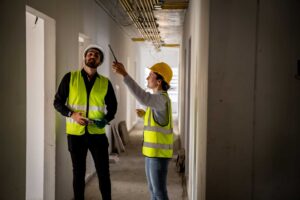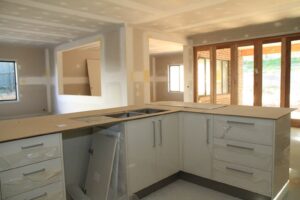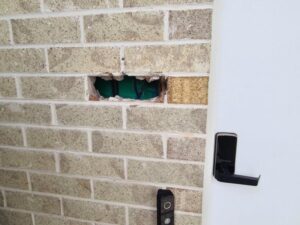Building a new property has never been more attractive now with the Government’s $25,000 HomeBuilder grant for not only first home buyers but also if you want to build your next home or if you’re looking to renovate your existing home.
Construction loans are not as straightforward as normal home loans so it is important to know the ins and outs of them.
on loan is for people who are building a house from scratch or making substantial renovations to an existing property. Most commonly construction loans are used for customers looking to purchase land and then construct a property on that land at the same time. Alternatively, you may be looking to construct a property on a block of land already owned or do significant renovations to a property you own and require a loan to assist you complete this renovation.
If you are looking at doing a land purchase and construction, it is always best to try and complete the contracts for these at the same time. By doing this it allows your lender to process and approve the loan in one go. Your builder will usually need a non-refundable deposit before they will produce the final plans and specifications.
Once you have finalised your build contract and have the final plans and specifications, you can now proceed with a valuation. Banks require a construction valuation to be completed on an on-completion basis (what the property will be worth after all the construction has been completed). This figure is what the lender will use to determine your maximum loan amount that they will lend against. In most cases your lender or broker will have access to ordering your valuation upfront (before having to submit an application). This allows you to know exactly what the expected value of the property is before submitting an application.
Once you have all the valuations and contracts completed you can then proceed with a loan application as per normal.
Things to consider:
- The bank will expect you to put your equity (either cash or property equity) in at the start of the construction project. This protects the bank and you by ensuring that there is always enough money left in the loan to complete the future construction progress claims in full.
- During the construction period, your loan will be on an interest only basis until fully drawn. You will need to be aware that while you only pay interest on the loan amount you have drawn to date, you will no doubt still be paying rent during this period as well, which can be a real drain on your cash flow. It is wise to keep additional funds aside to assist you during this period if your cash flow is tight.
- In some cases it may be tempting to remove certain items from the building contract and have them completed yourself, assuming you have contacts in the applicable trade, to save money on the construction. In many cases, however, the lender will only include the actual building contract for the valuation and draw downs, so you may have to finance these trades directly from your own cash reserves. This is predominantly due to the lender only wanting to deal with the one principal contractor, being the builder.
How is the Builder paid –
The lender will drawdown your new construction loan in a number of stages as per the building contract, in line with the progress on the construction of the house, called progress draws. Typically there are five to seven progress claims required which are in your building contract with the following being relatively standard:
- Deposit – This covers some of the builders out of pocket expenses for the Architect and council approval fees plus some of the initial site works and connection of electricity and water to the site.
- Base / Slab Stage – Concrete slab or stumps for a wooden floor are included in this stage, which often include underfloor plumbing.
- Frame Stage – The floor, wall and roof frames and windows are usually completed, and you can finally see your house beginning to take shape.
- Lock up / Enclosed stage – This is where it starts to get exciting! The house is starting to look like the Architect drawings with the roof on and the external walls and doors on.
- Fix-out / Practical Completion – While this stage seems to take forever for a new homeowner, it is where all of the necessary personal items such as baths and kitchens and door furniture are completed.
- Final / Completion Stage – Carpets, tiles, paint and the other final niceties are completed ready for final hand over and occupation.
Most lenders will pay these progress draws based on you confirming that the building has been completed up to the stated stage is completed. Therefore it is important that you check that the build is at the stage that is being paid. You may also want to get a licenced Building inspector to do an inspection for you to ensure everything has been completed as it should. There are certain stages that they will request the valuer doing an inspection on their behalf but this will not be on every stage.
Ready to build or renovate? We’re happy to help!
If you’d like to know more about the HomeBuilder Scheme or wish to discuss your individual circumstances and objectives, get in touch with us to get started today.
Craig Nevill – CNA Financial Services
Ph : 0498224905


